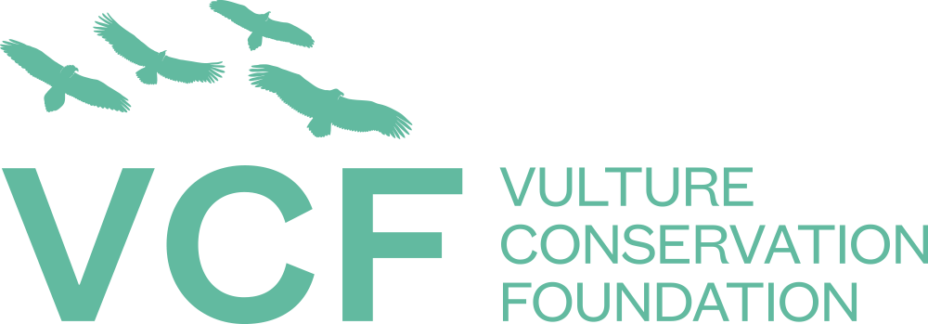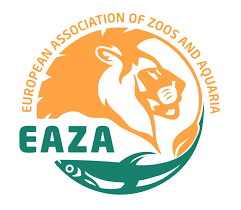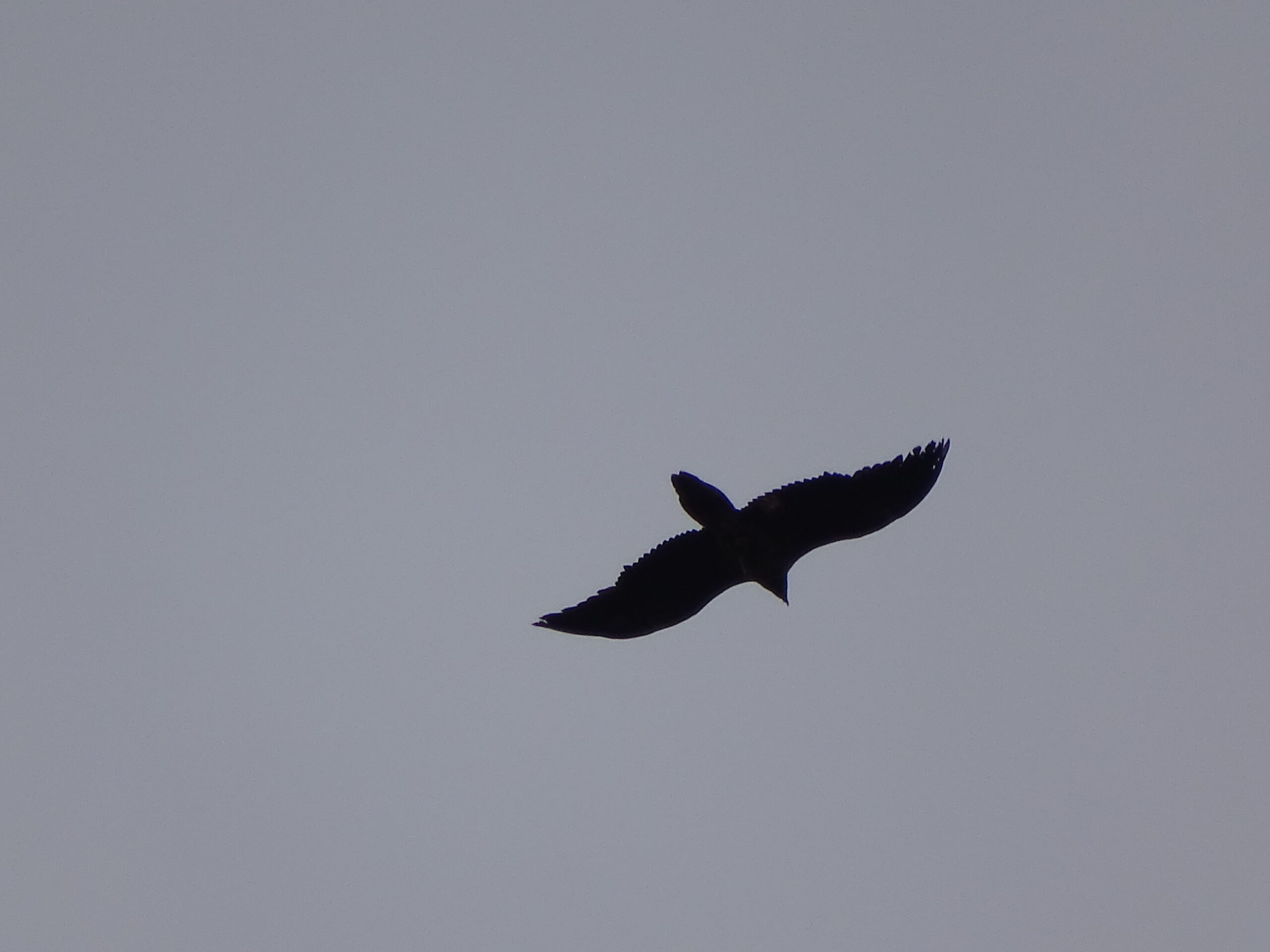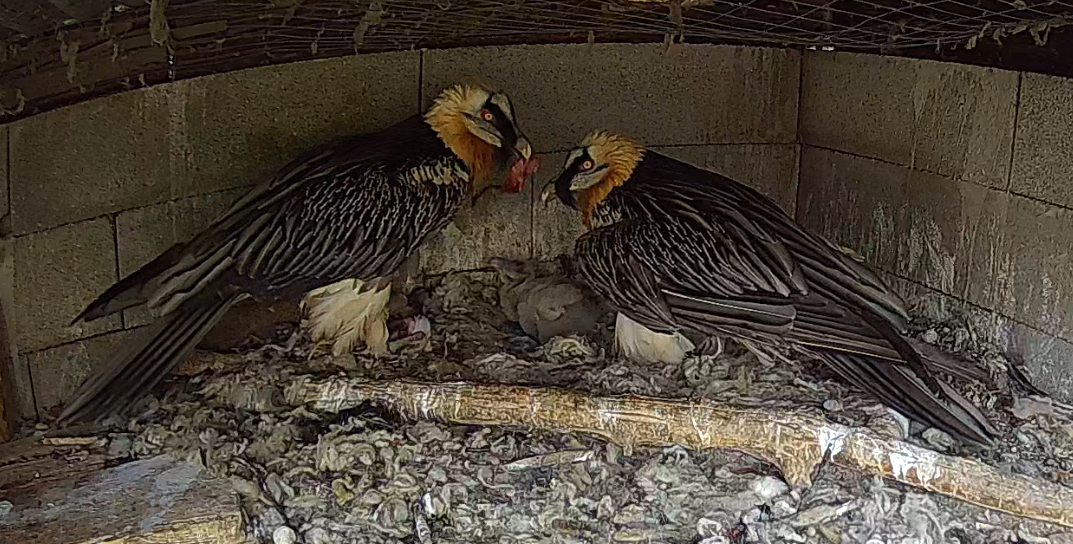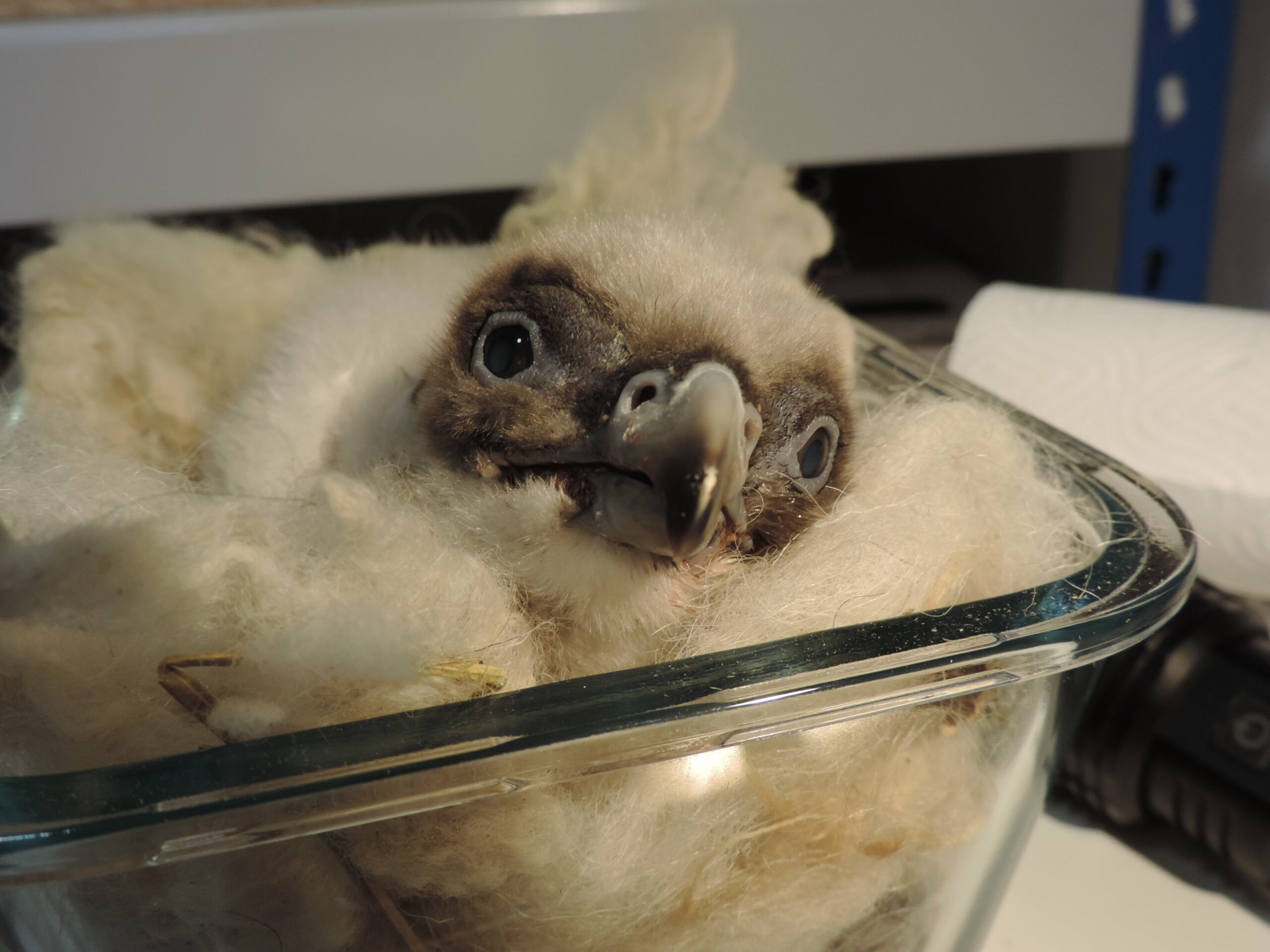The new Bearded Vulture captive breeding season is in full swing, so understandably, the staff at the Bearded Vulture captive breeding centre of Guadalentín (CCG), the most productive station of its kind, have their hands full. Guadalentín, currently managed by us at the Vulture Conservation Foundation (VCF) following an agreement with the Junta de Andalucía, breeds the most chicks in the world every year for conservation purposes. Right now, the pairs have already laid several eggs, and the new season appears promising!
The long and busy Bearded Vulture captive breeding season
Perhaps one of the most diligent and caring parents of the animal kingdom, Bearded Vultures perform several parental duties for many months to welcome and rear their offspring. Just like every year, at the end of September and early October, the mating season for the pairs begins. During this time, the staff provide the proper materials to the pairs and observe them around the clock, witnessing breeding pairs play with nesting materials such as sticks and wool, construct their nest, engage in mutual preening, exhibit aggression towards neighbouring pairs and start copulating. Egg-laying typically occurs three months after nest building and anywhere between 50 and 90 days after copulations. Once they lay the egg, the pair shares responsibilities and incubates the clutch for around 54 days, and the hatchling will usually be able to fledge at approximately four months of age. Human keepers have to keep an extra watchful eye over pairs during the breeding period since fights between members are more frequent. They also need to closely monitor their breeding behaviour to make sure everything goes smoothly and help boost chances of breeding success.
The breeding pairs at Guadalentín laid eleven eggs so far
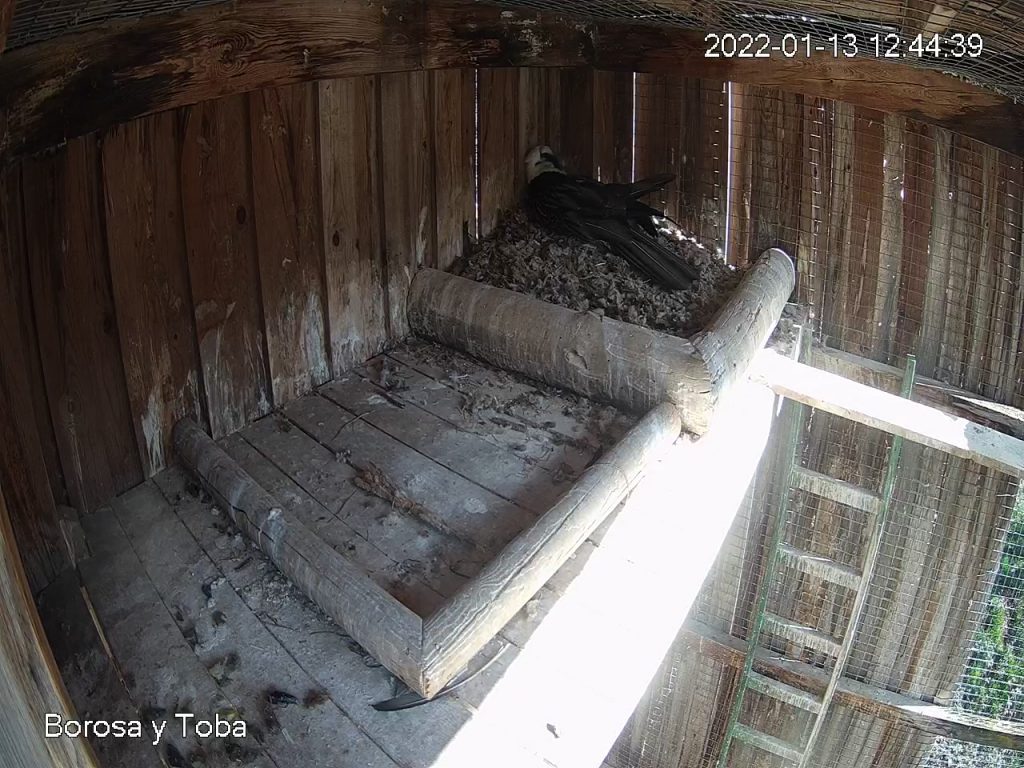
Bearded Vulture Borosa incubating at Guadalentín © VCF 
Bearded Vulture Keno incubating at Guadalentín © VCF 
Bearded Vulture Sabina about to lay the second egg at Guadalentín © VCF
There are seven (hopefully eight) breeding pairs at the CCG this season: Elías and Viola, Lázaro and Nava, Josef and Keno, Andalucía and Salvia, Borosa and Toba, Tranco and Sabina, Montero and Nona (excitingly, they are breeding for the first time) and Cabús and Perea, although there is not much hope for the latter (the possible eighth pair) because the male, Cabús, has a leg injury that prevents him from developing normally. Cabús and Perea were the parents of the tenth chick that hatched last year, which we nicknamed “Guinness”.
Keno laid the first clutch on 8 December 2021 and, so far, there are already eleven eggs laid in Guadalentín. The list of clutches is as follows:
- Josef and Keno: 1 egg (8/12/21).
- Lázaro and Nava: 2 eggs (20 and 25/12/21).
- Montero and Nona: 2 eggs (30/12/21 and 5/01/22).
- Tranco and Sabina: 2 eggs (4 and 13/01/22).
- Andalucía and Salvia: 2 eggs (2 and 9/01/22).
- Borosa and Toba: 2 eggs (7 and 12/01/22).
Viola has not yet laid, and we expect one more egg from Sabina. If the calculations do not fail and everything goes as desired, we can reach a total of 14 eggs! Hopefully, everything will go smoothly and we can reach, like last season, ten chicks hatched or, if the year is favourable, achieve a new hatching record.
Pairs within the captive breeding network keep on laying eggs
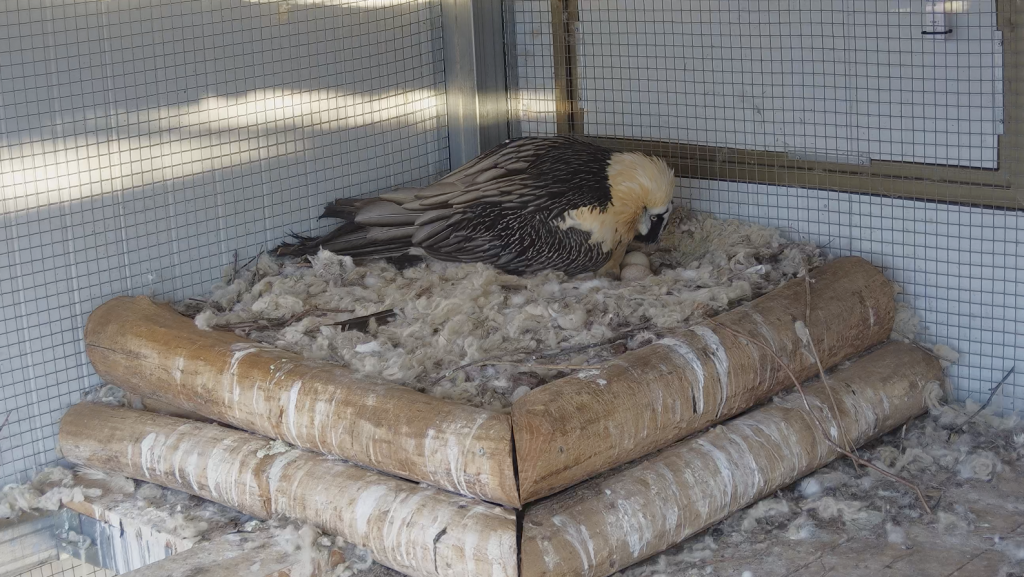
On another note, until today, 29 pairs have laid 42 eggs within the Bearded Vulture Captive Breeding Network. Of those, four are new pairs. Furthermore, there are still 15 laying pairs from 2021 that still have not laid and three additional pairs, which are mating but have never laid eggs. And, there is still a chance that new pairs can start breeding this season as it is early enough. But all this is just wishful thinking as each breeding season is different from the others and making predictions is risky – we will do our best and hope that it will be another fruitful one!
We will keep you informed. To follow the news of the breeding season, follow #BeardedVultureBreedingSeason on Facebook, Twitter, Instagram and LinkedIn.
Breeding Bearded Vultures for conservation purposes
Back in 1978, the Vulture Conservation Foundation and partners united to bring the Bearded Vulture back to the Alps. To achieve this goal, pioneers established a captive-breeding programme to produce chicks and release them into the wild, with the first release taking place in 1986 at the Austrian Hohe Tauern National Park. It took time and perseverance since Bearded Vultures only reproduce when they reach around 7-10 years old, with one chick surviving per year. Still, thanks to these efforts, the species returned to the Alps, making it one of the best wildlife comeback stories of all time! Ever since this success, more projects were launched across France and Spain. Today, the Bearded Vulture Captive Breeding Network, coordinated by the VCF on behalf of EAZA‘s European Endangered Species Programme (Bearded Vulture EEP), closely works with over 40 partners, including zoos, to ensure the best breeding results from the potential breeding pairs in captivity. Every year, the VCF and partners release young captive-bred Bearded Vultures into the wild across Europe to reintroduce the species to areas where it went extinct or boost local, vulnerable populations. Up until the end of 2021, a total of 344 captive-bred Bearded Vultures were freed into the wild.
